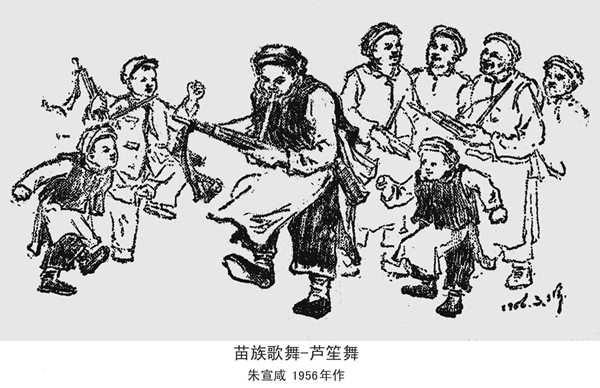The historical origin and origin of Lusheng
The reed is a reed instrument of the Miao, Yao, Dong and other ethnic groups in the southwest. Originating in the Central Plains, it was introduced to the minority areas in the later Tang Dynasty, and its predecessor was the yu of the Han nationality. The villages inhabited by ethnic minorities in various parts of Guizhou are known as the "Hometown of Lusheng" and "Hometown of Songs and Dances". They are one of the musical instruments especially loved by ethnic minorities. Colorful reed party, blowing reeds and dancing to celebrate their own national festivals.

During the Tang Dynasty, the minority people of Guizhou began to make reeds, and many outstanding reeds players emerged. In ancient times, tributes to Beijing brought reeds to the court to play, which was highly appreciated by court officials.
In the Southern Song Dynasty Fan Chengda's "Guihai Yuheng Zhi": "Lu Sha Yao people are happy, like Xiao, with eight vertical pipes and one horizontal pipe." The Southern Song Dynasty Zhou Qufei's "Answered to Outside the Mountains": "The joys of the Yao people include reed sand, drums, gourds, and bamboo flutes. . . . One is vertical, one horizontal, eight, and one blows eight, and it sounds." In the Ming Dynasty, Lu Sha wrote Lusheng. In the Ming Dynasty, Qian Guxun "Bai Yi Zhuan": "The drums are played in the village, the reeds are played, and the dance is a banquet." In the Ming Dynasty, Ni Chang's "Nanzhao Wild History" records that the Miao people in central Yunnan, "Mengchun dances to the moon every year, the male plays the reed, the female sings the bell, dances side by side, and is tireless all day long." In addition, Kuang Lu's "Chi Ya" in the Ming Dynasty and Tian Wenmengzhai's "Qianshu" in the Qing Dynasty all have records. In the Qing Dynasty, the literati Lu Ciyun wrote in his book "Xianzhi of Tongxi": "(Male) holds a reed Sheng. The Sheng has six pipes and is two feet long. ... The Sheng Festival staggers and sings, and the hand flies. If you are enough, you will be raised, your gaze will turn your limbs back, and your spirit will be swirling. At the beginning, you want to pick up and leave, or at least you will dance and gallop, and you will be chasing and chasing." This section records, we can see that in the Qing Dynasty, Guizhou The reed playing skills and reed dance movements of the ethnic minorities are wonderful. It can also be seen the role and status of the reed in the life of the ancient Miao people. 渝公网安备 50010702504639号
渝公网安备 50010702504639号